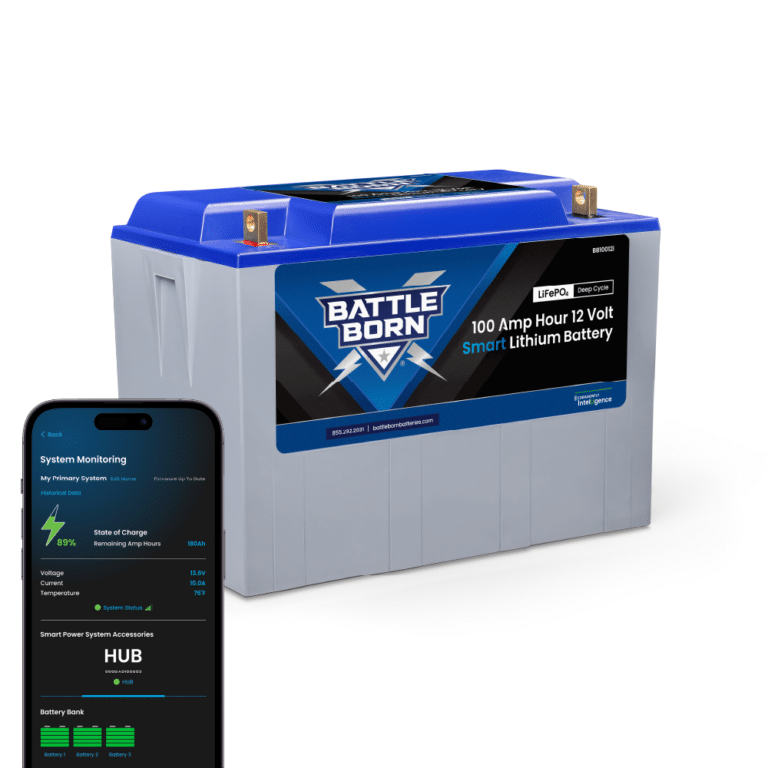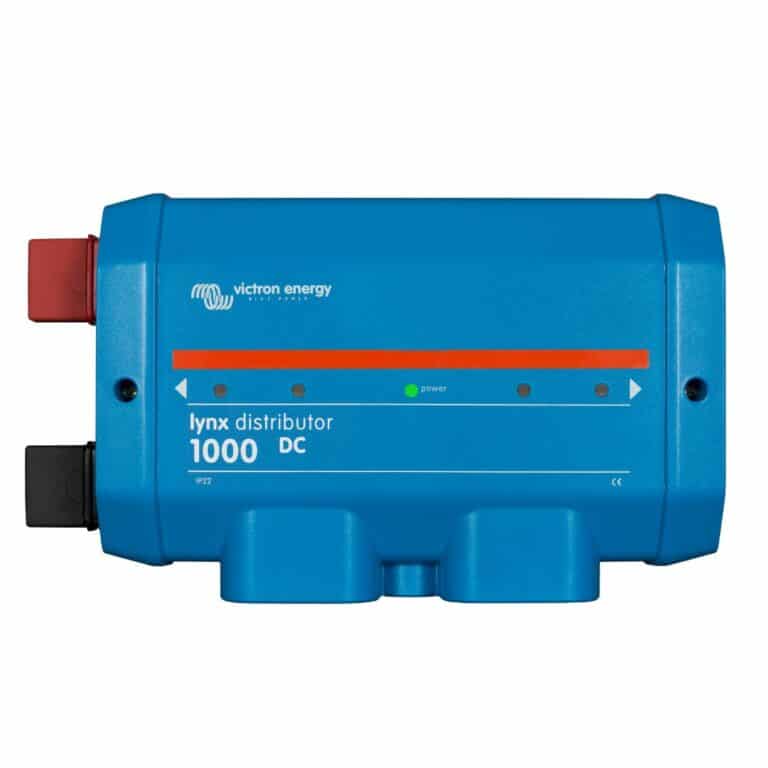
MENUMENU
TALK TO AN EXPERT
Special Hours: 7AM – 6PM PST
TALK TO AN EXPERT
Special Hours: 7AM – 6PM PST
Are you looking for a boat motor that doesn’t scare away the fish? Or maybe you need to control your drift as you cast your reels. Either way, trolling motor setups can be extremely helpful for many reasons. Trolling motors are essential for maintaining complete control over your boat’s position and being able to get that perfect catch.
Many have used lead-acid batteries with their trolling motors but run into issues with their weight, low-capacity capabilities, and the fact that they do not perform well in cold weather. Battle Born Batteries make these issues obsolete! One of our batteries weighs a third of a standard lead-acid battery. That greatly improves the overall performance and speed of your boat.
In addition to this, they can supply two to three times more power. You cannot drain a typical lead-acid battery below 50% of its capacity without significant damage. But our deep cycle LiFePO4 batteries utilize a special chemistry that allows you to use 100% of your batteries’ capacity without damaging them.
Battle Born Batteries are also capable of being charged up to five times faster than a standard lead-acid battery. So, you can spend less time waiting on your batteries to charge and spend more time doing what you love.
Want to learn more? Keep reading below!
A trolling motor is a small, self-contained propulsion system. Typically powered by a battery, a trolling motor is not the primary source of propulsion. You can also lift it out of the water while you use your outboard motor. This prevents unwanted drag so you can glide through the water effortlessly.
Nevertheless, trolling motors have a purpose. Usually positioned at the bow, they can provide better steering control and increased maneuverability around your favorite fishing spots. They’re also much quieter than their gas-powered counterparts so that you can move stealthily through the water.
So, what’s the difference between a trolling motor and an outboard motor? First and foremost, the former is usually electric, while the latter is typically gas (and sometimes motor oil). Positioned at the back of the boat, an outboard motor is your primary source of power. It gets you where you need to go and can steer your boat as well. You can also tilt your outboard motor to avoid hitting the bottom in more shallow waters.
In contrast, trolling motors are supplemental. They typically only reach speeds of around 5 mph and are used for trolling (hence the name), keeping position, better maneuverability, and quietly moving from one spot to another.

There are several different types of trolling motors, and the best one for you will depend on how you want to use it. For example, if you plan on using your trolling motor for actual trolling, you might want to pick a transom mounted motor. However, if you want better steering control, you may opt for a bow-mounted trolling motor. Keep reading to learn more.
Bow-mounted trolling motors are one of the most popular options for Anglers, and ironically, people rarely use them for their intended purpose. The thrust is on the boat’s bow, which provides excellent positioning for pointing your boat in one spot.
Because they’re pretty slow (5 mph at most), bow-mounted trolling motors aren’t the best for going more than 100 yards; nevertheless, they’re fantastic if you want to slowly explore a shoreline or control the drift of your boat.
Want a trolling motor that’s actually good for trolling? Transom motors will be your best bet. They’re mounted onto the boat’s transom and are great for keeping a steady, slow pace through the water as you fish. Because of how they’re mounted, an electric transom motor might be the only propulsion you need – especially if you’re in a smaller vessel such as a Jon boat or dinghy.
Hand steer trolling motors are similar to outboard engines because they’re typically at the back of the boat, and you manually steer them.
Also known as “tiller steer” models, you can simply turn the tiller clockwise to increase speed and counterclockwise to slow down. To steer, use the rule of opposites: turn the tiller right to turn left and left to turn right.
Are you a bass fisherman or -woman? If so, a foot pedal steer option might be best. They let you propel and steer your boat hands-free as you cast your line.
Certain brands of foot pedals will operate slightly differently from one another, but generally, you maneuver your boat with your foot. For example, some have buttons on the left and right of the pedal to control steering. And like a car, the harder you press the pedal, the faster your boat will go.
The most modern, high-tech trolling motors are remote-controlled. The controllers usually come with a lanyard that hangs around your neck, so you can control the speed and steering at the touch of a button. Often, these trolling motors come with other features, such as GPS, autopilot functions, and even virtual anchoring.
Trolling motors provide many advantages, especially when you’re heading out to cast your reel. Number one, they’re quiet and environmentally friendly, which makes them great for trolling, of course. You can focus on putting your bait in the proper position rather than rowing your boat. Trolling motors are also fantastic if you need to quietly maneuver through fishing hotspots.
Trying to stay in one place while there’s an annoying drift or wind gust? They’re also helpful when you want to keep your position without setting down an anchor. And lastly, they’re a great backup motor if you’re in a pickle. Outboard engine fails? You’ll have another way to get back to shore. (Yes, it might take you a while, but at least you’ll get there!)
The main disadvantage of a trolling motor is that you’ll rely on battery power. This means keeping your batteries maintained and charged correctly, as well as possibly having to load and remove the batteries every time you use your boat to charge and store it (unless, of course, you have a way of charging it in the boat).
Another negative is that they’re slow and don’t have much power. Want to get somewhere fast? Not with your trolling motor. Its purposes lie outside of the realms of speed.
Lastly, if you’ve ever lugged around lead-acid deep-cycle batteries, you know how heavy they can be. So, while trolling motors are usually light, their batteries will add weight to your boat. However, this can be remedied by switching to much lighter and more powerful lithium-ion batteries.
My boat already has a battery–do I need a separate one for my trolling motor? The short answer is: Yes, unless you want to get stuck sitting in the middle of a lake.
If you use your starter battery for your trolling motor, you’ll most likely drain the battery quickly, and you won’t be able to start the outboard motor when you need to. Therefore, it’s best to reserve the starter battery for electronics and its main purpose–starting your primary engine.
There are several options for powering your trolling motor. The three most common types of batteries are lead-acid wet-cell, AGM (Absorbed Glass Mat) deep-cycle batteries, and lithium batteries. Flooded lea-acid and AGM batteries have been used for decades, and both provide power over a lengthy period. Manufacturers designed them for more frequent charging, so that can be inconvenient while you’re on the water.
Additionally, you can’t discharge a lead-acid battery below 50% without damaging it. So, if you’re on the water longer than expected and your charge dips below 50% on your way back, your battery will suffer irreparable damage. A few instances of that, and you’ll have to replace the battery.
More recently, our lithium-ion batteries have grown in popularity for trolling motors. Compared to traditional deep-cycle batteries, lithium batteries have a longer run time, an extended lifespan, and they weigh less–what could be more important when you’re floating on the water?
Plus, you can completely discharge a Battle Born lithium-ion battery without causing damage. So, as long as you have a charge, you can keep on trolling!
Therefore, many anglers are switching to lithium-ion batteries for their trolling motors. Along with the benefits we’ve already listed, they also end up being cheaper because they last longer and require no maintenance. So you can spend the day wrestling with the fish and not with your battery!
So, how long can you plan to be out on the water? The answer to this question entirely depends on your batteries’ amp-hours. A battery’s amp-hour rating is similar to a car’s gas tank–it tells you how much power you have in your battery, and thus, how long you can use it.
Additionally, the type of battery you use will influence the trolling motor’s run time. A Battle Born lithium-ion battery will put out full power the entire time you’re using it.
Conversely, a lead-acid battery starts to lose power as it gets closer to the 50% mark. If poor use or charging damaged the battery in the past, the power output decreases even faster. So, the amp-hour rating on your lead-acid battery might not be entirely accurate.
For any battery, a simple formula to convert amp-hours to actual hours is amp rating / amp-hour = hrs of use. For example, if your battery has 100 amp-hours, and you’re pulling 5 amps from your battery, your usage length will be 20 hours (100 amp hrs / 5 amps = 20 hrs).
If you’re using a Battle Born lithium-ion battery that stays strong for a full 20 hours straight, you can catch a lot of fish in that time!
Shop Best Sellers








Ask a technical specialist now at 855.292.2831
Stay in the Know
2 thoughts on “Lithium Battery-Powered Trolling Motor Setups”
Looking for trolling motor battery
Check out our trolling motor applications here: https://battlebornbatteries.com/product/battle-born-energy-trolling-motor-100ah-kit/